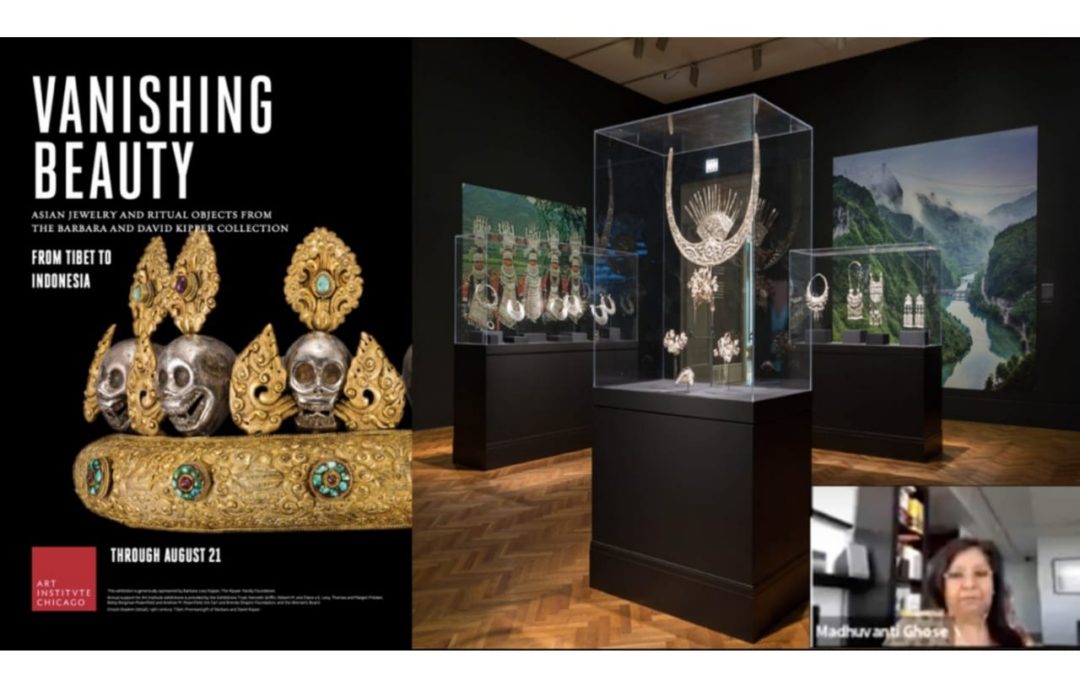The Panacea for Museum Professionals through the COVID-19 Crisis
During the national lockdown, the Center for Art and Archaeology of the American Institute of Indian Studies (CA&A of AIIS), an educational research center based in Gurugram was resilient in adapting to the conditions and offering online learning opportunities in the museum field. In August and November 2020, the center hosted two 5–day virtual workshops for Indian museum curators and outreach and education professionals within the U.S.–India Professional Collaboration initiative, supported by the U.S. Mission to India, New Delhi. Dr. Madhuvanti Ghose, Alsdorf Associate Curator of Indian, Southeast Asian, and Himalayan Art from The Art Institute of Chicago, U.S.A., designed and led both the workshops. She included themes that form the core of a curator’s role including interpretation and label writing; documentation and digitization of collections; preventive conservation; conceptualization and execution of exhibitions as well as public engagement.
These seminal themes in museum practice were the focus of the workshops with the aim of making the museum going experience more dynamic and engaging in Indian museums. The online format also worked well with the need to transform museums into digital spaces and was exceptionally rewarding for all participants. There was a diversity in representation of experts and the twenty-nine fellows who participated in these two workshops.

Organizers, Experts, Speakers and Fellows of the August Cohort (L) and Fellows of the November-December Cohort (R)
Leading curators and conservators from America including Dr. Vidya Dehejia (Barbara Stoler Miller Professor of Indian and South Asian Art at Columbia University), Dr. Debra Diamond (Curator of South and Southeast Asian Art, Freer Gallery of Art, National Museum of Asian Art, Smithsonian Institution), Dr. Vishakha Desai (Senior Advisor for Global Affairs, Columbia University), Dr. Darielle Mason (The Stella Kramrisch Curator of Indian and Himalayan Art, Head of the Department of South Asian Art, Philadelphia Museum of Art) and Ms. Rachel Freeman (Associate Paper Conservator, The Nelson-Atkins Museum of Art) presented case studies on displays, exhibitions, conservation practices and visitor programming and exposed the fellows to international best practices and standards.

Dr. Ghose during the Q&A session following Dr. Vidya Dehejia’s lecture on her exhibition, Reflections on Curating “Devi: The Great Goddess”

Dr. Vishakha Desai in discussion with Dr. Ghose on Museums and their Importance in Society
“I have learned many new terminologies and technical details to develop a meaningful exhibition. I will train my colleagues on that. It will make our exhibition more accessible to visitors.”
–Vishi Upadhyay, Curatorial Associate Collection Unit (Art, Culture and Youth Department), Bihar Museum, Workshop fellow
The practical nature of the assignments encouraged immediate exercise of concepts. The first cohort exercised its curatorial skills by curating virtual exhibitions and the second cohort created visitor engagement programs on CA&A AIIS’s online platform, the Virtual Museum of Images and Sounds (VMIS). The virtual exhibition space has so far been an under explored avenue and even the visitor experience programming ought to respond to the potential of museums evolving as cultural environments. In an era of virtual learning, these exhibitions and programs will set a precedent for museums in the future. These will be open to view on the VMIS, and the top three curators and program creators will be honoured to acknowledge their accomplishments. While the visitor experience programs are presently underway, the virtual exhibitions cover an interesting array of themes such as the evolution of textiles, archaeological subjects and contemporary art.
“My personal stories of hair emerged from long-held beliefs in my family. Rethinking how these hair rituals might have evolved during the lockdown in India inspired me. I hope that I can take this exhibition beyond human hair and explore its materiality in cloth practices.”
–Vaishnavi Kambadur, Curatorial Assistant, Museum of Art and Photography and curator of the exhibition We All Share the Same Hair that was ranked first

Preview of the virtual exhibitions curated by the August cohort on view on the VMIS website
The workshop created a space for professionals from different backgrounds, with various work experiences to participate in the same learning experience and set a model for a museum community within India. The focused training and learning outcomes from the workshop will prepare the fellows in curatorial and outreach positions from across India to be better equipped to respond to the post-pandemic museum world. As the museum sector in India thrives and presents opportunities in comparison to the rest of the world, upskilling from this workshop will lead to creative opportunities to optimize new prospects.
About
The Center for Art & Archaeology of the American Institute of Indian Studies (CA&A AIIS) specializes in documentation of monuments and antiquities across India and other South Asian countries. The center’s Gurugram headquarter houses the leading archive and library on visual arts & architecture of the subcontinent.
Stuti Gandhi is Research Associate at the CA&A AIIS. She works on archival research and museum documentation projects at the institute and provides project management support for its various initiatives in the arts and culture space.








Recent Comments